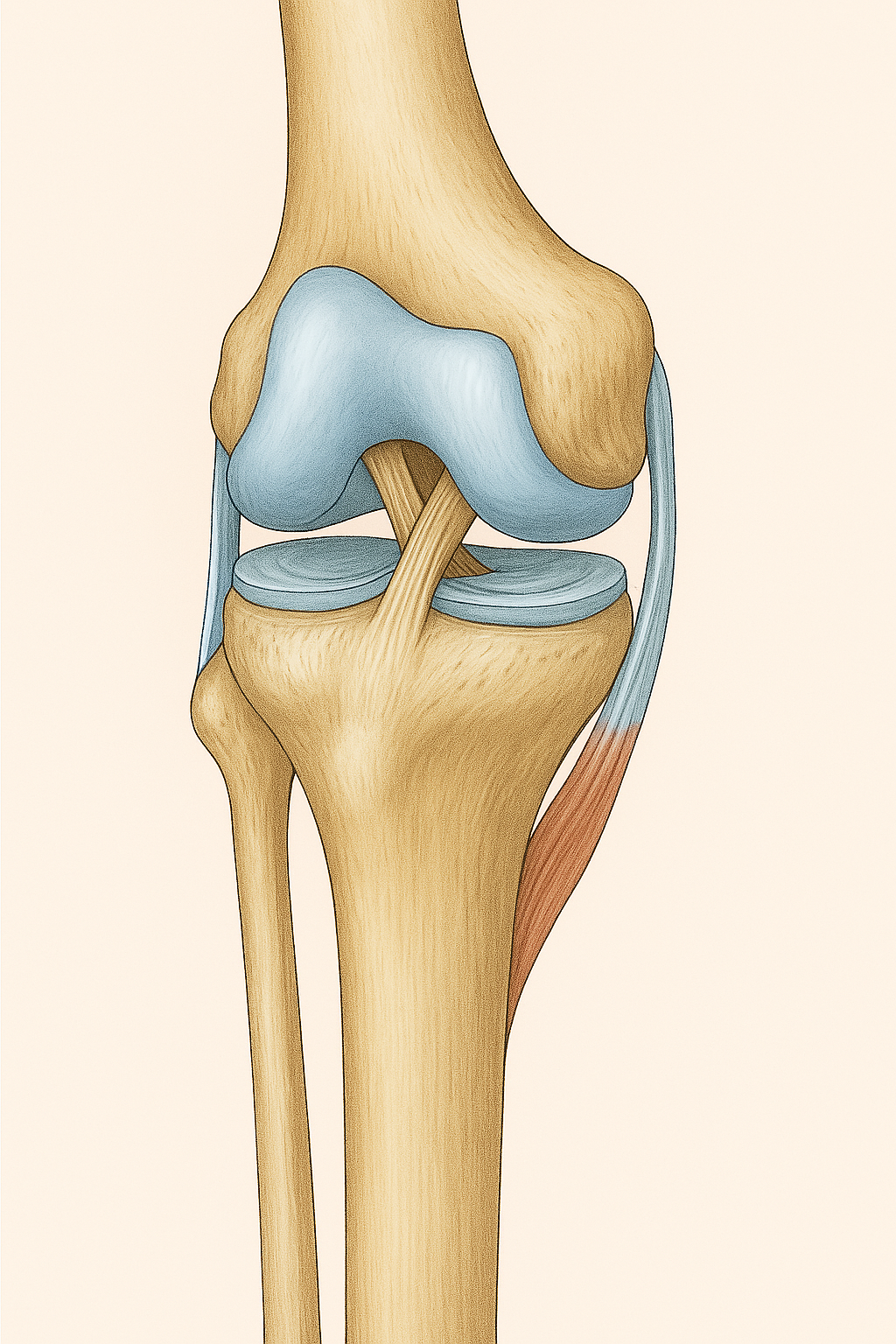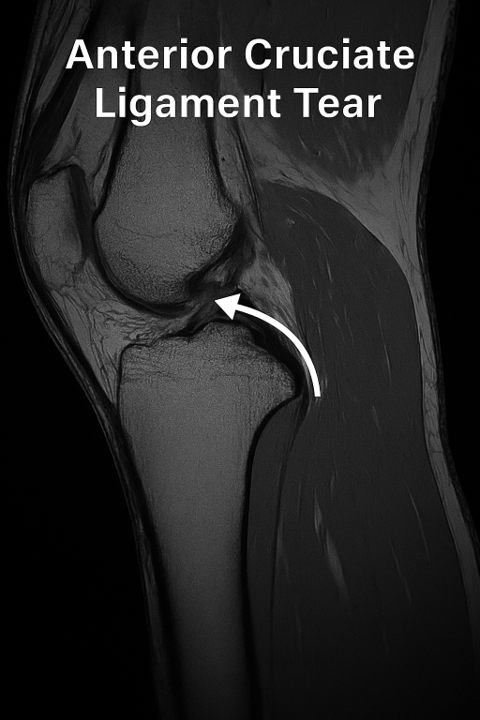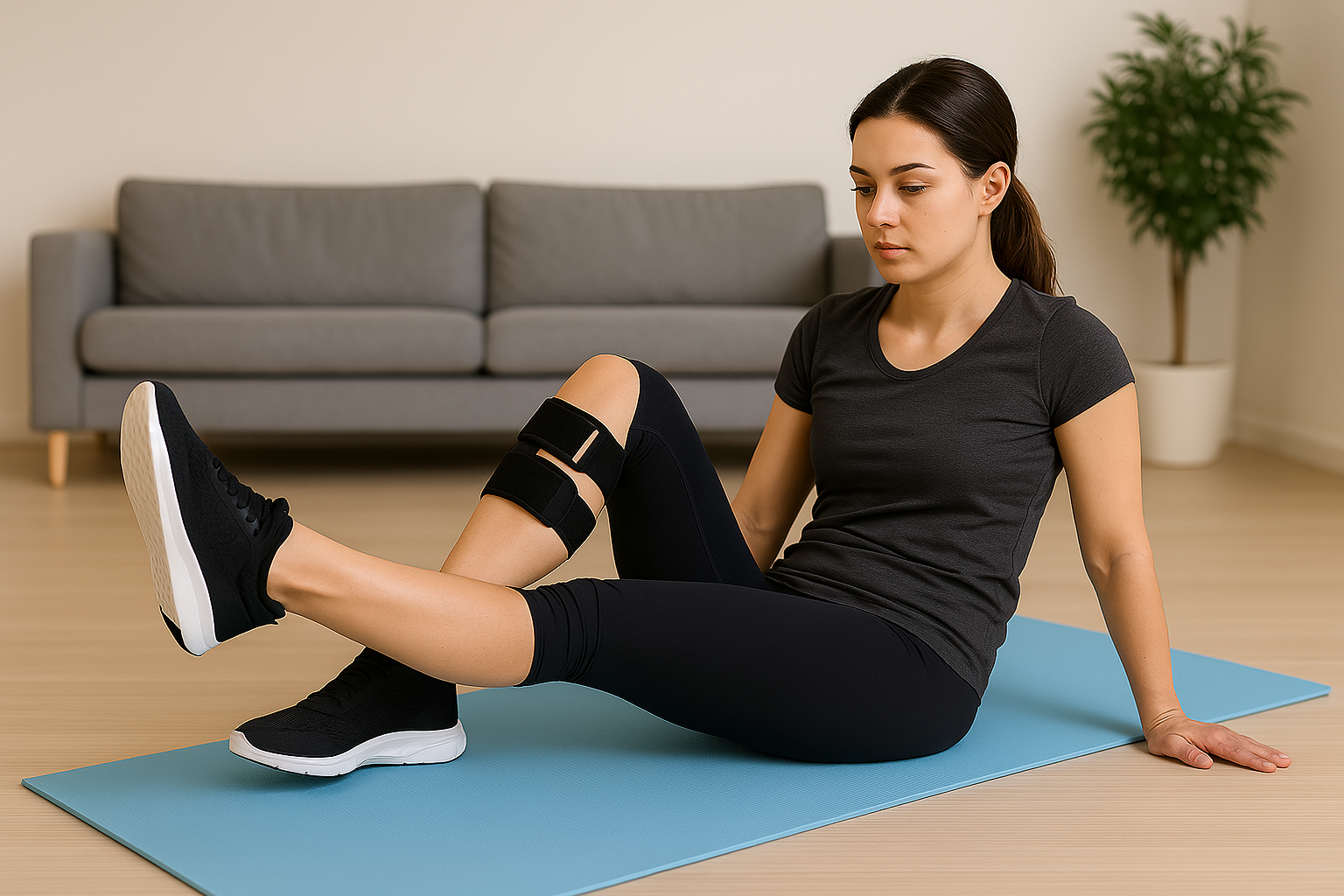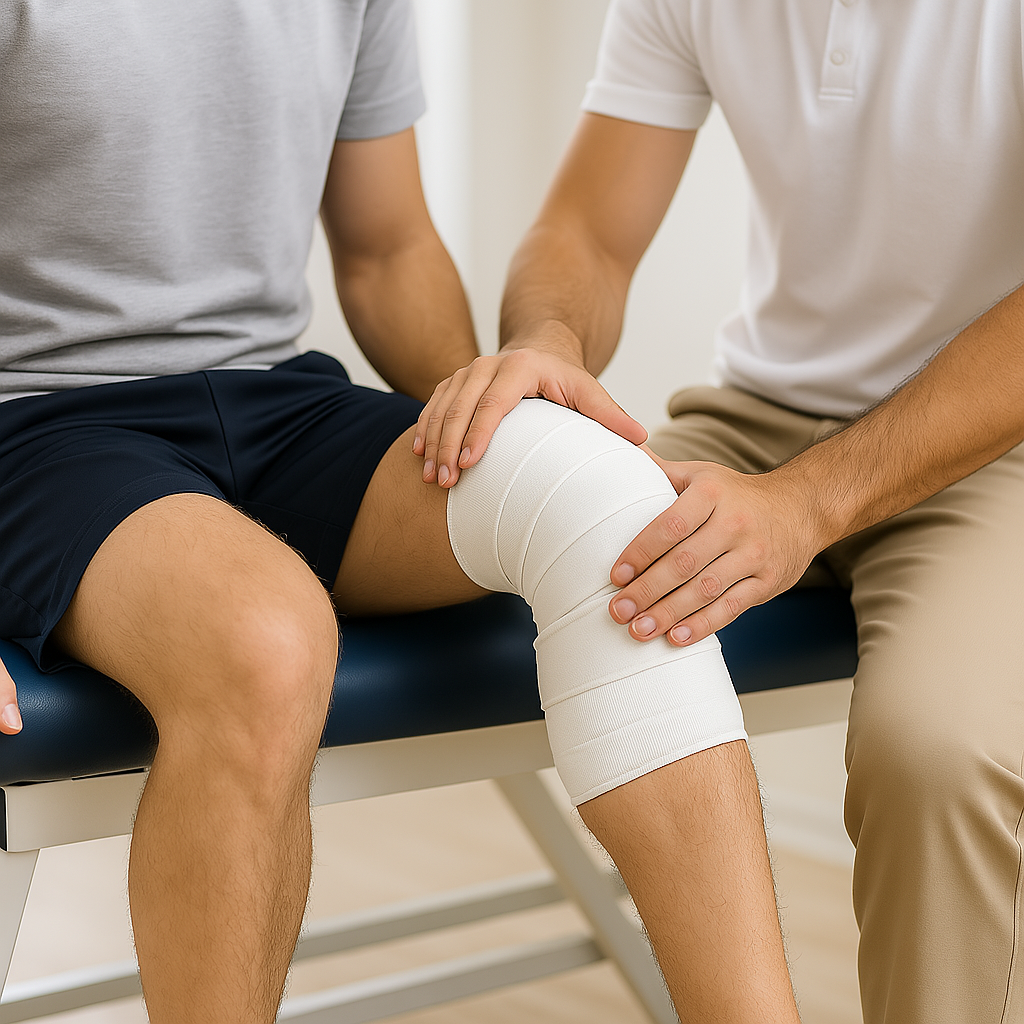What Is the Anterior Cruciate Ligament?
The anterior cruciate ligament is one of the major stabilizing structures of the knee joint. Its main function is to prevent the tibia (shin bone) from sliding forward in relation to the femur (thigh bone), particularly during rotational movements and sudden directional changes.
Although the ACL is a strong and essential ligament, it is subjected to extreme stress during sports activities that involve jumping, cutting, pivoting, and sudden stops or turns—making it highly susceptible to injury.
Knee Anatomy – Why Is This Joint So Prone to Injury?
The knee is the largest and one of the most complex joints in the human body. While it allows for a wide range of motion, it also has relatively poor natural stability due to its structural design.
The knee joint consists of:
-
The femur (thigh bone)
-
The tibia (shin bone)
-
The patella (kneecap)
To maintain stability, the knee is supported by a multilayer system:
-
Muscles and tendons – dynamic stabilizers
-
Collateral ligaments – provide lateral stability
-
Cruciate ligaments (anterior and posterior) – control front-to-back movement and rotation
The anterior cruciate ligament plays a key role in maintaining the knee’s biomechanical integrity.

Image: Anatomy of the knee joint
How Does an ACL Tear Happen?
An ACL tear typically results from a sudden extension and rotation of the knee, often during:
-
Landing from a jump with poor alignment (volleyball, basketball)
-
Changing direction rapidly (football/soccer, handball)
-
Falls while skiing
-
Direct blows or awkward twisting of the leg (martial arts, tackles)
When the injury occurs, patients often describe:
-
A sudden, sharp pain
-
A popping sensation in the knee
-
Rapid swelling
-
Instability or the inability to bear weight

Image: ACL tear
Immediate Action for Suspected ACL Injury
In the acute phase, apply the RICE protocol:
-
Rest
-
Ice – reduces swelling and pain
-
Compression – use an elastic bandage
-
Elevation – elevate the injured leg
Acting quickly can help manage symptoms and prevent further damage. However, accurate diagnosis requires clinical evaluation.
Diagnosing an ACL Tear
After the initial exam, a physician may perform joint aspiration (removing fluid from the knee). The presence of blood in the joint (hemarthrosis) often points to a torn ACL.
Specific manual tests follow (e.g. Lachman test, anterior drawer test), and final diagnosis is confirmed using imaging techniques:
Key Diagnostic Methods:
-
MRI (Magnetic Resonance Imaging) – allows visualization of soft tissues like ligaments, menisci, and cartilage
-
Arthroscopy – minimally invasive surgery that provides direct visual assessment; used when MRI is inconclusive
In most cases, an ACL injury is accompanied by damage to other structures like the menisci, collateral ligaments, and articular cartilage, which makes detailed imaging crucial.
Treatment Options for an ACL Tear
There are two main treatment paths:
1. Non-Surgical Treatment (for Partial Tears)
This includes:
-
Physical therapy
-
Kinesiotherapy
-
Muscle strengthening to support joint stability
This approach may be sufficient for older individuals or those with low physical activity levels who do not experience instability.

Image: Exercises to strengthen the muscles around the knee after ligament injury
2. Surgical Treatment (for Complete Tears)
In most complete ACL tears, ligament reconstruction surgery is performed—often referred to as ACL reconstruction.
What Does the Surgery Involve?
-
Harvesting a graft from the patellar tendon or hamstring
-
Drilling tunnels into the femur and tibia
-
Inserting and fixing the new ligament using screws or anchors
This procedure restores knee stability, especially in active or athletic individuals.
Rehabilitation After an ACL Injury
Recovery duration depends on the type of treatment:
Non-Surgical Rehab:
-
Approximately 12 weeks
-
Focus on regaining strength, mobility, balance, and coordination
Post-Surgical Rehab:
-
At least 6 months, often up to 9
-
Starts with gentle movements, then progresses to weight-bearing and sports-specific training
Successful recovery depends heavily on a disciplined and personalized rehabilitation plan.

Image: Rehabilitation after anterior cruciate ligament injury
When Is Surgery Necessary?
The decision should be individualized, based on the patient’s age, activity level, goals, and the degree of knee instability.
✅ Surgery is typically recommended when:
-
The patient is young and physically active
-
Engages in sports involving rotation and cutting
-
Knee instability persists after conservative treatment
❌ Surgery may not be needed when:
-
The patient is sedentary or elderly
-
There is no significant instability or functional limitation
Some athletes return to sports without surgery, but others may later require reconstruction due to recurring instability or further injury.
An ACL tear is a serious injury that demands thorough diagnosis and a tailored treatment plan. While surgery isn’t always necessary, recovery is rarely simple or quick—and always depends on the individual’s goals and physical demands.
With expert care and a well-structured rehabilitation program, full recovery and return to sport or normal daily life is entirely achievable.
F.A.Q.
The anterior cruciate ligament (ACL) is one of the main stabilizers of the knee. It prevents the tibia from sliding forward in relation to the femur, especially during rotation or sudden directional changes.
An ACL tear usually results from a sudden movement such as an awkward landing, rapid change of direction, or direct trauma—especially during sports activities.
Common symptoms include sudden pain, rapid swelling, a popping sensation, instability, and difficulty bearing weight on the injured leg.
Not always. In partial tears or with less active individuals, non-surgical treatment such as physical therapy and strength training may be sufficient.
Recovery typically takes 6 to 9 months following surgery, depending on the individual and the quality of rehabilitation.
No. Due to limited blood supply, the ACL cannot regenerate on its own. In the case of a full tear, surgery is generally required.
In addition to the ACL, menisci, collateral ligaments, and sometimes cartilage are frequently damaged during the injury.
Rehab includes controlling pain and swelling, restoring range of motion, strengthening muscles, and regaining joint stability through progressive training.
Key exercises include strengthening the quadriceps and hamstrings, proprioception drills on unstable surfaces, controlled squats, and progressive lunges.
In some cases, yes—especially in low-impact activities—but there is a high risk of further instability or damage without surgical stabilization.
